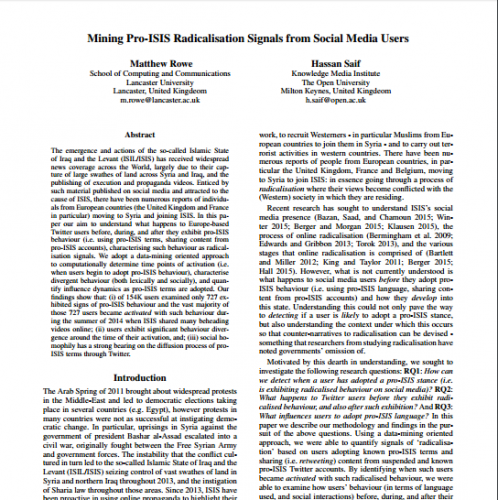The emergence and actions of the so-called Islamic State
of Iraq and the Levant (ISIL/ISIS) has received widespread
news coverage across the World, largely due to their capture
of large swathes of land across Syria and Iraq, and the
publishing of execution and propaganda videos. Enticed by
such material published on social media and attracted to the
cause of ISIS, there have been numerous reports of individuals
from European countries (the United Kingdom and France
in particular) moving to Syria and joining ISIS. In this paper
our aim to understand what happens to Europe-based
Twitter users before, during, and after they exhibit pro-ISIS
behaviour (i.e. using pro-ISIS terms, sharing content from
pro-ISIS accounts), characterising such behaviour as radicalisation
signals. We adopt a data-mining oriented approach
to computationally determine time points of activation (i.e.
when users begin to adopt pro-ISIS behaviour), characterise
divergent behaviour (both lexically and socially), and quantify
influence dynamics as pro-ISIS terms are adopted. Our
findings show that: (i) of 154K users examined only 727 exhibited
signs of pro-ISIS behaviour and the vast majority of
those 727 users became activated with such behaviour during
the summer of 2014 when ISIS shared many beheading
videos online; (ii) users exhibit significant behaviour divergence
around the time of their activation, and; (iii) social homophily
has a strong bearing on the diffusion process of proISIS
terms through Twitter.

Mining Pro-ISIS Radicalisation Signals from Social Media Users
x